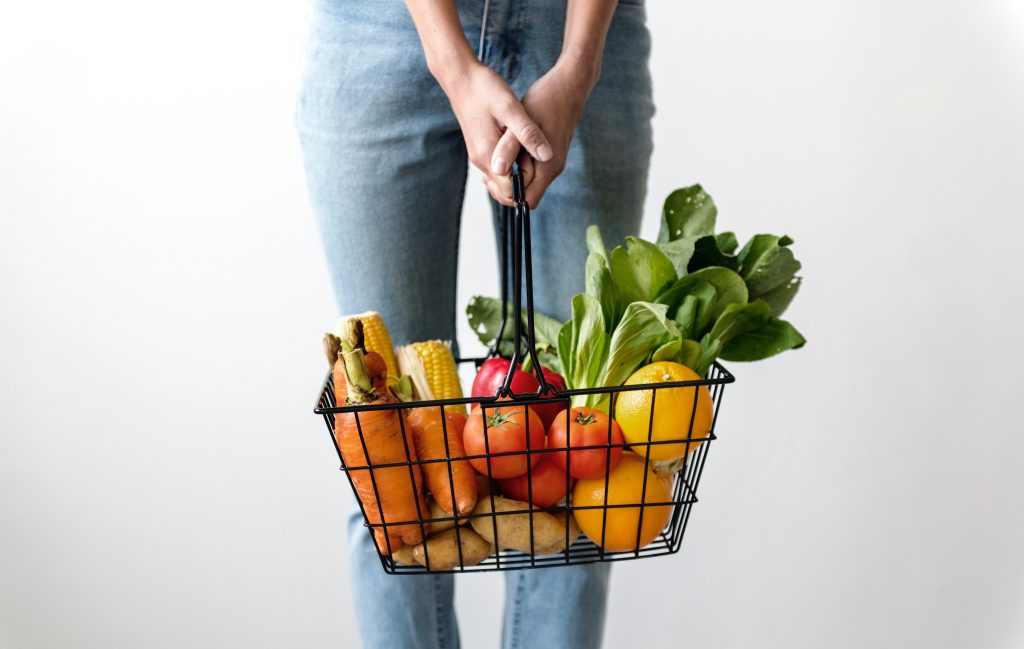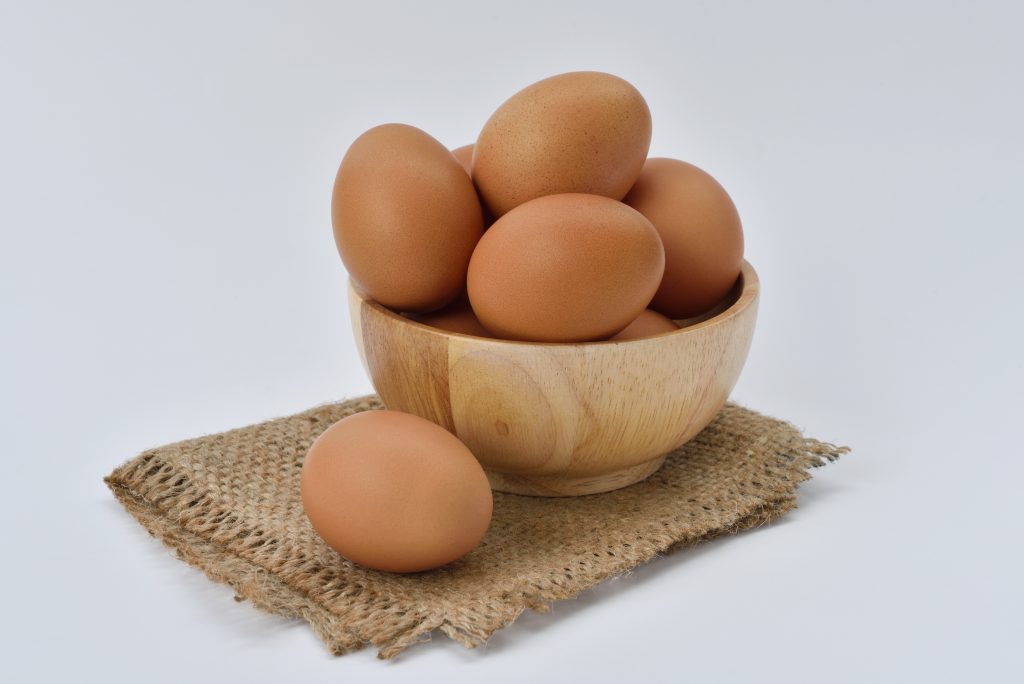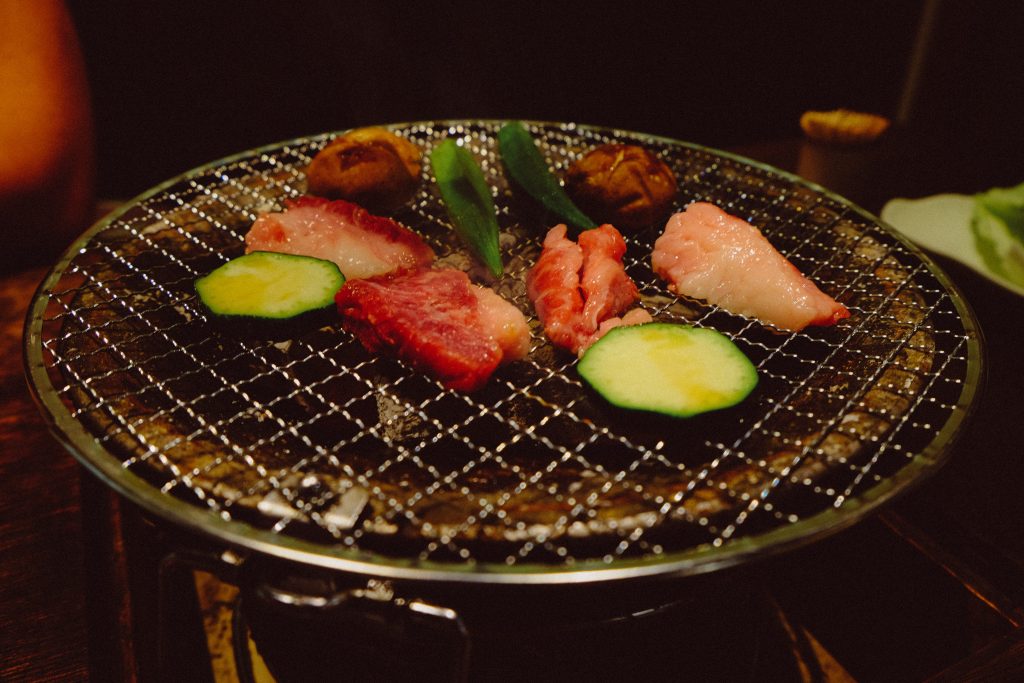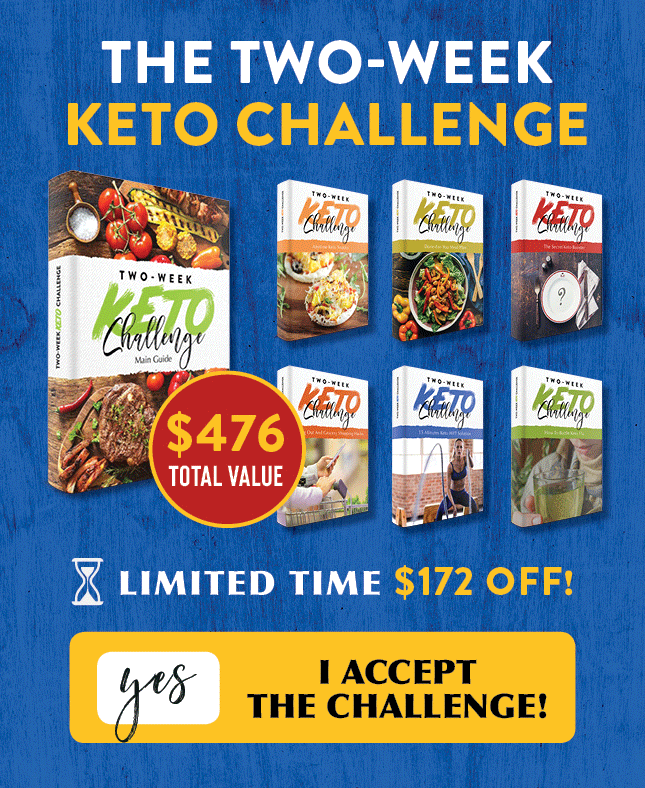What do you think of when you think of the keto diet?
Meat, eggs and bacon?
And what do you think of when I say the words “Plant-Based-Diet”?
It’s certainly not keto, right?
But what if I told you that it’s totally possible to do keto AND stay true to a plant-based diet?
Impossible?
Well, it’s not and in this article, I’ll show you how to do it.
First, let’s start by looking at some different meanings of what exactly plant-based means.
Here are some of the most common plant-based diets:
VEGAN

The vegan diet is 100% plant based. Vegans don’t allow for any animal products, that even includes honey.
STANDARD VEGETARIAN

The vegetarian diet avoids all meat products. And for the most part its completely plant based. The only exception is dairy and eggs.
PESCATARIAN

This variation is a spin-off of the vegetarian diet where plant foods are at the forefront, but it includes dairy, eggs and seafood.
LACTO-VEGETARIAN

The is also another spin-off of the standard vegetarian diet where you can eat dairy but can’t eat eggs.
OVO-VEGETARIAN

The ovo-vegetarian diet is the exact opposite of the lacto-vegetarian diet, here you can eat eggs, but can’t eat dairy.
FLEXITARIAN

The flexitarian diet is a new variation within the realm of plant-based diets.
People following a flexitarian diet eat a plant-based diet most of the time, but it does allow meat and other animal products in moderation.
As you can imagine people choose to follow a plant-base diet for a variety of reasons.
Some do it for religious purposes, while others do it for moral reasons.
Yet others feel that it’s the healthiest way to eat, while some feel that it’s better for the environment.
Whatever your reasons for following a plant-based diet you’re in good company.
More and more people are choosing to follow a plant-based diet.
But the question is…
Can You Do Keto And Still Be Plant Based?
As you’ve already seen, there are a variety of plant-based variations you can follow.
And your goals and general philosophy will dictate which variation you choose.
However, if your goal is to get into ketosis…
You’ll need to keep a few things in mind.
#1: TO ACHIEVE KETOSIS YOU MUST CUT DOWN ON CARBS
That’s pretty obvious right?
But how do you achieve that and still stay true to your plant-based diet?
First of all, you won’t be able to rely on the traditional vegetarian and vegan proteins like grains and legumes.
They’re way too high in carbs. Which leads me to my next point…
#2: YOU HAVE TO BE ABLE TO SUSTAIN IT
Keto and plant-based diets have restrictions, the key is to figure out how you can do both.
Keto banishes carbs…
While plant-based diets tend to get rid of animal proteins from meat and fish and some even include dairy.
If you combine them both, all you’re left with is coconut oil, olive oil and low carb veggies. Not a huge selection.
If you move towards a more flexible plant-based diet like vegetarian, pescatarian, and flexitarian you have a little more wiggle room when it comes to protein sources.
Which brings up my next point.
#3: YOU NEED PLENTY OF PROTEIN
When you eat animal products, you’re getting what are called complete proteins. Which means they contain all the essential amino acids you need for optimal health.
A plant-based keto diet with no animal protein could mean that you’re not getting adequate protein or a full spectrum of amino acids in your diet.
A better approach would be to increase your intake of vegetables, while still getting plenty of high-quality animal protein from things like meat, bone broth, eggs, and full-fat dairy.
6 Steps To Following a Plant-Based Keto Diet
#1: CHOOSE YOUR PATH
As you just saw, there are a variety of ways to follow a plant-based diet. There are also variations of keto.
Before you get started, you’ll want to decide which variation makes the most sense for you.
Be realistic when you choose— think about what food you can do without and think through how you can make it work.
No matter which variation you choose, boosting your ketones is the name of the game.
#2: KEEP CARBS LOW
The goal with keto is to keep your carbs low, so which ever variation you choose you’ll need to make that priority.
And because you’ll be avoiding meat on a vegetarian or vegan diet, you will have to plan out your meals carefully.
Remember: you can’t eat rice or beans on a keto diet.
If you’re following a plant-based diet now and you rely on fruit, grains, and starchy carbs you’ll have to alter your diet.
Make sure you know the carb count of all of your plant-based foods.
#3: EAT LOTS OF LOW-CARB VEGGIES
Because you’ll be eating mostly veggies you can load up on low carb options. No more starchy veggies like potatoes, carrots, winter squash, and other root vegetables, instead you’ll want to eat:
- Spinach
- Kale
- Broccoli
- Cauliflower
- Brussels sprouts
- Cucumber
- Celery
For a more comprehensive list, join my Two-Week Keto Challenge.
You’ll want to eat at least one serving of these low-carb veggies at each meal, and replace all high carb veggies with leafy greens and cruciferous options whenever possible.
#4: STAY ON TOP OF YOUR PROTEIN
We’ve already talked about protein, but it really is the hardest part of this whole plant-based keto diet.
When you’re consuming animal products like meat, eggs and dairy it’s not as much of an issue.
And this is a common problem for a lot of people following a plant-based diet, not just those going keto.
Depending on which plant-based variation you choose, this could mean relying more on eggs and dairy for your protein intake, or a combination of plant-based proteins to get you into the ideal range of protein intake.
Most likely you’ll need to supplement with a vegetarian or vegan protein powder if you opt for a variation that does not include any animal product.
#5: CONSUME A VARIETY OF FATS
Fat intake is the key to keto and the goal is to consume a variety of different fat sources.
With plant-based keto, even though you’ll be avoiding animal fats, you still have an abundance of options when it comes to healthy fats.
You’ll want to choose things like coconut oil and olive oil over processed vegetable oils.
You also want to make sure you’re getting enough omega-3 and omega-9 fatty acids from healthy oils, and avoid getting too many omega-6 fatty acids found in many vegetable oils.
Some great plant-based fat options include:
Nuts and seeds:
- Macadamia nuts
- Almonds
- Brazil Nuts
- Walnuts (omega-3)
- Chia seeds (omega-3)
- Flax seeds (omega-3)
- Hemp seeds
- Pumpkin seeds
Oils:
- Olive oil (omega-9)
- Coconut oil
- Avocado oil (omega-9)
- MCT Oil (medium chain triglycerides)
- Macadamia oil
- Flax oil (omega-3)
Other:
- Avocado (omega-9)
- Coconut butter
- Olives
- Coconut milk
#6: PLAN AHEAD
When it comes to keto, even if you’re not following plant-based variation you still need to plan. However, with plant-based keto it’s even more important.
Ideally, you’ll want to plan your meals on a Sunday for the week ahead. That way you have plenty of everything you need to make sure you get all of the protein and healthy fats necessary.
If you like to eat out, you can look into local plant-based restaurants and see what options they have that are low carb.
Who knows pretty soon you may find that it’s extremely easy to plan ahead.
Best Protein Sources on a Plant-Based Keto Diet
There are nine essential amino acids that your body needs to function properly.
Protein is essential for muscle growth and maintenance and also for immunity, body weight, growth and development, as well as heart health.
Since plant-based diets typically cut out animal protein altogether, you’ll want to make sure you have plenty of other protein sources available.
Here are a few options:
- Nuts and seeds
- Tempeh
- Tofu
- Natto
- Miso
If you’re not vegan then you can add:
- Dairy
- Eggs
Here are a few more tips to help you with your Plant-Based Keto Diet:
TAKE EXOGENOUS KETONES
Taking exogenous ketones like my Ultimate Keto Pure BHB Salts can be a great way to boost your ketone levels.
Exogenous just means “from the outside,” so exogenous ketones are essentially ketones you take in the form of a supplement.
On a plant-based diet, you’re more likely to ride the line when it comes to being in ketosis. And exogenous ketones like those in Ultimate Keto can help get you stay in ketosis or get you back into ketosis.
EAT MORE (HIGH-QUALITY) FAT
Dietary fat is essential when you’re on keto. Fat protects your nervous system, and helps your body communicate with different areas through neuronal signaling. In fact, your brain consists of nearly 60% fat and has a large impact on your brain’s ability to perform.
Fat is also essential for hormone production and it also creates a protective layer around your organs. Dietary fat is also necessary for the absorption of many nutrients, including vitamins A, D, E, and K.
Just be sure you’re getting the right balance of omega-3 fatty acids to omega-6 fatty acids.
Omega-6 fats are abundant in most foods and people usually have no issues getting enough.
Omega-3s, on the other hand are rarer and you’ll need to carefully select foods that are high in Omega-3s.
The ideal ratio of these two fatty acids is 1:1; the problem is most people are closer to 20:1 (omega-6: omega-3).
The truth is, getting a 1:1 ratio is easier said than done, but the closer you get, the better off you’ll be.
TRACK YOUR MACROS
When it comes to following a plant-based keto diet, tracking your macros is a must. Especially if your goal is to achieve ketosis.
Macro tracking is even more important for plant-based keto because you’ll have a tendency to eat more carbs.
You’ll also need to make sure you’re getting enough calories.
Due to the limitations on a vegetarian or vegan keto diet, you may end up
AVOID NUTRIENT DEFICIENCIES
All plant-based diets run the risk of acquiring nutritional deficiencies.
That’s why it’s so important to eat a variety of foods to make sure you cover your bases. Vary your low-carb veggies, choices of nuts and seeds, and vegan protein options.
If you find yourself in a food rut, you can try new recipes like those found in the manual that accompanies the material you receive when you join the Two-Week Keto Challenge.
And if you haven’t yet joined the Two-Week Keto Challenge you can do that by clicking here.
When you take the challenge, you’ll be given everything you need to follow the keto diet perfectly.
Whether you’re following a plant-based approach or a more traditional keto diet.






